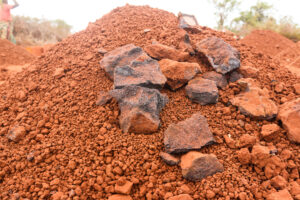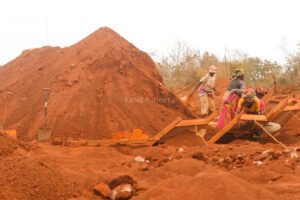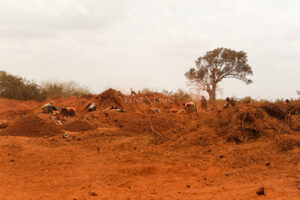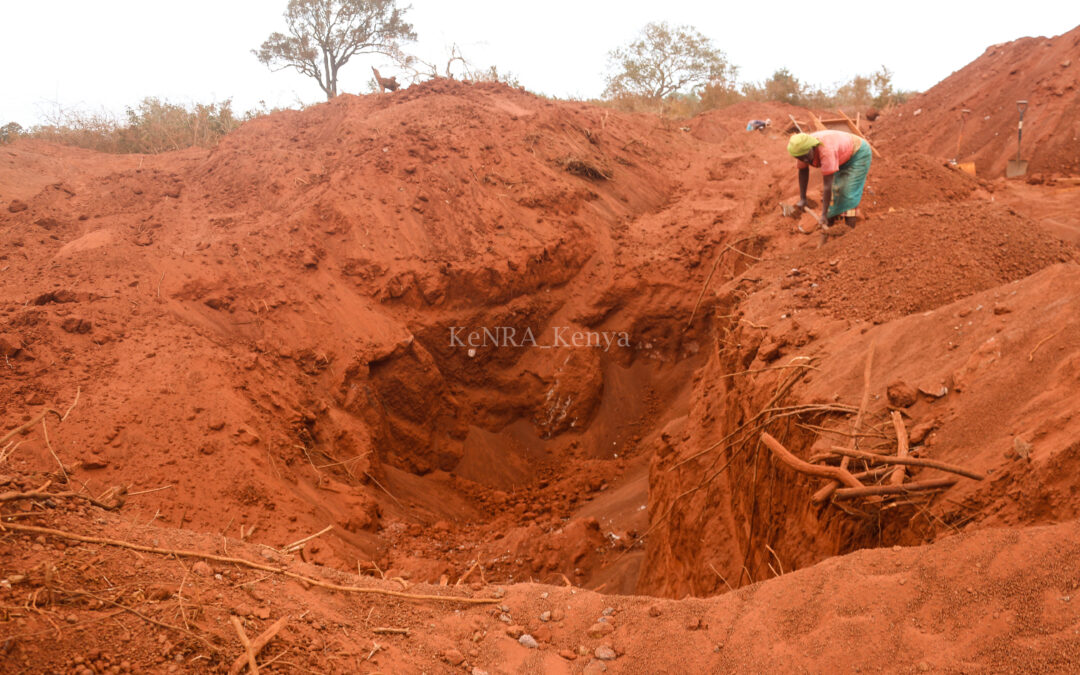

Kilifi County is among the top ten richest counties in Kenya, and the second richest county in Kenya’s coastal region contributing an average of 2.2% GCP to the country’s GDP, according to recent reports. The county’s major income is sourced from the mining and quarrying industry in the region, as it is endowed with a wide range of minerals such as manganese, salt, coral rocks, sand, and limestone. Among other sectors contributing to Kilifi County’s income are tourism, fishing, and agribusiness. The exploration of these resources however does not reflect on the quality of life of residents in the county characterized by high poverty estimated at 71.7% and widespread food insecurity affecting approximately 67% of the county’s households.
Of counties recently greatly affected by climate and economic changes in the country, Kilifi has not been left unscratched. The increase in the intensity and frequency of the occurrence of extreme weather events has occasionally led to droughts and floods in some areas of the county, affecting health, agriculture, tourism, and environmental sectors as a result. The county is faced with major environmental challenges including air pollution from the surrounding quarries and cement factories, water pollution, soil degradation, and deforestation among others.
Bale village in Ganze constituency, is the newly discovered hotbed for manganese in the region known to have a rich stretch for the mineral used mainly for the production of steel. Over the past year, majority of locals, previously engaged in farming have turned to manganese harvesting for their livelihoods, with Bamba Mining Company being the solely licensed Miner. Farming, they say has become unreliable due to low rains and poor soil quality. Other villages in the county with ongoing manganese exploration include Mugumoni, Sitaki, Sosoni, Vilwake, Kadzandani and Mangororo in Sokoke Ward. In the neigbouring Jaribuni Ward, most of the mining sites are at Mayowe and Vyambani.
At the mining sites, massive open pits and heaps of already dug-out deposits will greet one’s sight. A cloud of red dust will follow before one can locate the laborers, mostly women, covered in dust, scooping and sieving to separate the mineral-rich rocks from soil, barely wearing any protective gear

They do this for at least 5 days a week, to receive payment on the 6th day, an average of Ksh. 1500 per laborer according to the amount of manganese-rich rocks they were able to collect during the week. According to the locals, the income is meager considering the time consumed at the sites, the kind of labor involved, and the risks that come with the work; mostly physical injuries and chest problems. In some cases, women bring along their nursing children to work putting their health at great risk. While this unfolds, mining companies and the local authorities rarely engage directly with the workers to have any of these issues addressed.
James Mwaringa, a local land owner, his family, and neighbors have had to move to nearby lands to pave way for the extraction of the mineral discovered in their original residential land. For James and most locals, this has been the case since the discovery of the mineral whose mining has become a significant source of employment for locals since 2018, employing over 2000 residents in the sub-county.
While the current rush for manganese and exploration of the mineral in the county may seem beneficial to locals at the moment through job creation, the future is blurry. Questions on what comes next in terms of sustainability, health safety, and land restoration remain barely answered.
In our efforts to engage the different stakeholders in Kilifi county, KeNRA has this year paid two visits to the county, in February and June consecutively. Between the two visits, there has been a noted increase in the rate at which agricultural and residential lands are being converted to mining lands. Mining-related health issues, Conflicts on land ownership are on the rise and plans to restore lands to their original productive state are seldom discussed.
In a recent meeting with KeNRA, the Kilifi County speaker Teddy Mwambire noted that the region is a goldmine of untapped potential, endowed with even more mineral resources whose discovery and proper exploration could transform the economic landscape of the county while uplifting the lives of its residents. According to Mwambire, the County government currently lacks comprehensive knowledge of the value and overall returns of the region’s mineral wealth as such information is held at the national level. He further indicated that locals are often inadequately engaged by investors and other players in the mining chain to sufficiently benefit from mining activities in the region and take necessary actions against them when they fall out of line with the terms of the agreement. While urging stakeholders to take up the sensitization role, the speaker also encouraged land owners and miners to group themselves into committees and cooperatives that will not only ensure better incomes but also push for the provision of essential resources such as better mining tools and protective gears as well as address corporate social responsibility, emphasizing the urgent need to address environmental and social responsibility to ensure mining does not harm the environment and social welfare of locals.
Echoing the Speaker’s sentiments, Ganze MP Kenneth Kazungu has been quoted saying mining should complement agribusiness to push Kilifi up the richest counties in Kenya. “With this, we shall have more opportunities especially with the opening up of improved roads and new businesses. This will attract more investors in our area,” he said.
As a step towards ensuring maximum beneficiation from mining in the region for the County and it’s residents, the Kilifi County government led by CECM water, environment, forestry, climate change, natural resources and solid waste management Hon. Omar Said Omar, has in the recent days visited quarries in the county to evaluate the extent of compliance and activities undertaken by quarry owners especially in Jaribuni Ward, the center stage of mining in Kilifi County. According to the CEC, some miners have not met basic mining requirements such as acquiring mining permits, and the crackdown could lead to the closure of the mines. While the scene for manganese mining is mainly dominated by small-scale miners, the CEC says they are putting in efforts to ensure past mistakes are not repeated even as the venture expands in the coming years.
The county’s department of water, environment, and natural resources is mandated to ensure sustainable management of natural resources by maintaining a clean and healthy environment for sustainable development and managing sustainable exploitation of natural resources, minerals not an exception. Notable to say, the county has reported efforts in developing a County Mining Policy to ensure sustainability.
In line with our mission to consolidate and coordinate community efforts in advocating for policies and legislation that promote equitable access, control and sustainable use of natural resources, KeNRA is working towards partnering with County Governments and likeminded organisations to create public awareness on mining and its impacts, organizing communities and amplifying their stories and helping counties develop holistic strategies on mining in line with the Kenyan Constitution, among other engagements In the management of natural resources.
Kenya is Rich, Get Organized!

